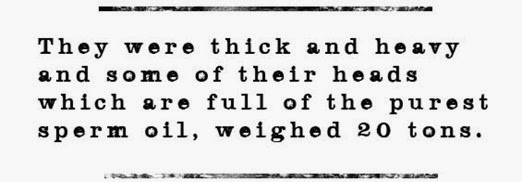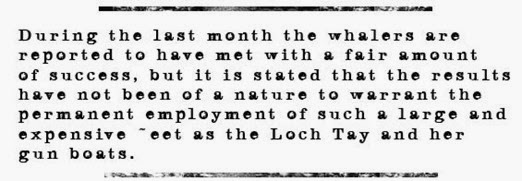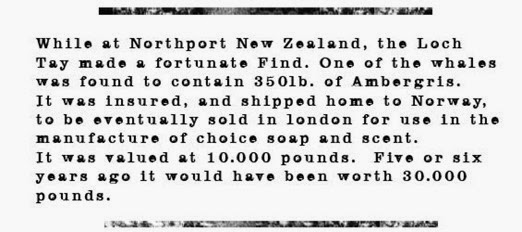| The Factory ship Loch Tay. | |||
| The history of the largest factory whaling ship to work from Jervis Bay. | |||
 | |||
| Built 1893. and named the SS Loch Tay, Newcastle UK for the Dundee Loch Line Steam Ship Co. Ltd. | |||
| |||
| After returning to Jervis Bay for a second season it proved to be a good season for whales and no fewer than 329 were caught and dealt with. | |||
| The Sydney Morning Herald (NSW : 1842 - 1954), Wednesday 6 August 1913, | |||
| 1912. They moved the operation to Western Australia but ran into the same sort of problems with the authorities as they had with their Jervis Bay operation, and with the Freemantle Whaling Company. | |||
| |||
| Ambergris is a solid, waxy, flammable substance of a dull grey or blackish colour produced in the digestive system of sperm whales. Freshly produced Ambergris has a marine, faecal odour. However, as it ages, it acquires a sweet, earthy scent commonly likened to the fragrance of rubbing alcohol without the vaporous chemical astringency. Although ambergris was formerly highly valued by perfumers as a fixative (allowing the scent to last much longer), it has now largely been replaced by synthetics.
| |||
| Ref: Loch Tay image. http://skipshistorie.net/Tonsberg/TBG142AlfMonsen/tekster/TBG14219110200000LochTay.htm |
10 March 2015
Whalers – Jervis Bay
Subscribe to:
Post Comments
(
Atom
)





No comments :
Post a Comment